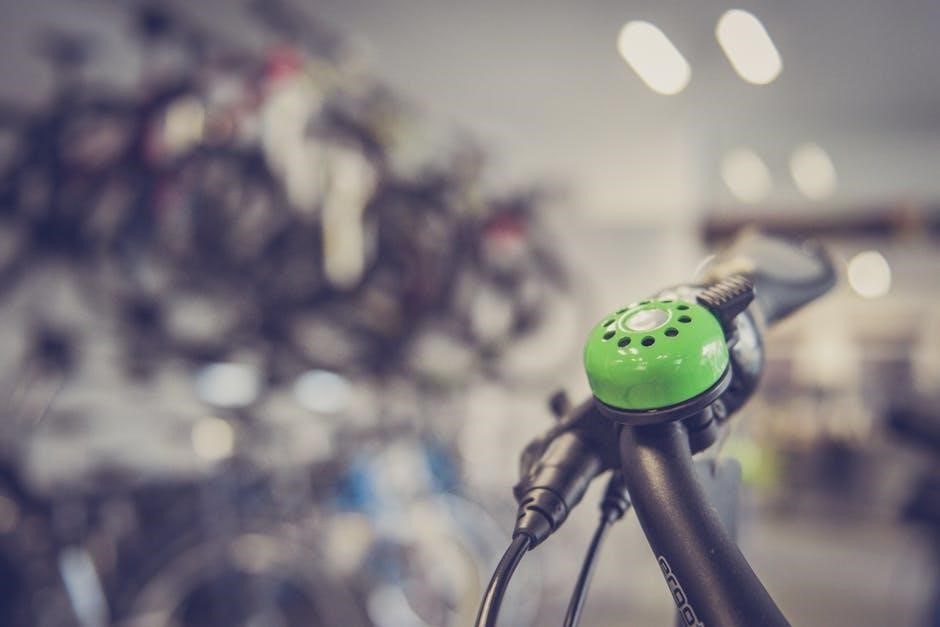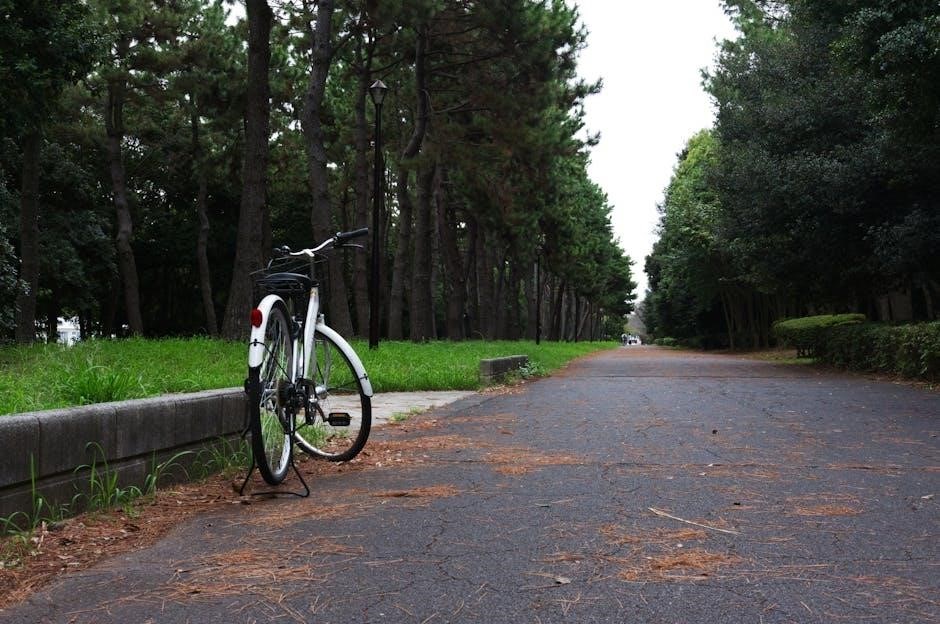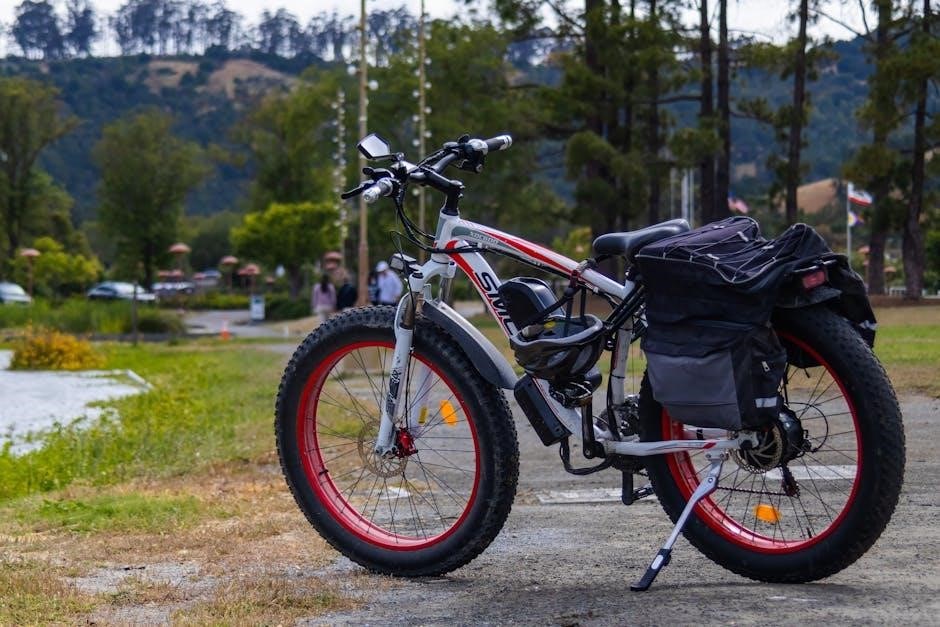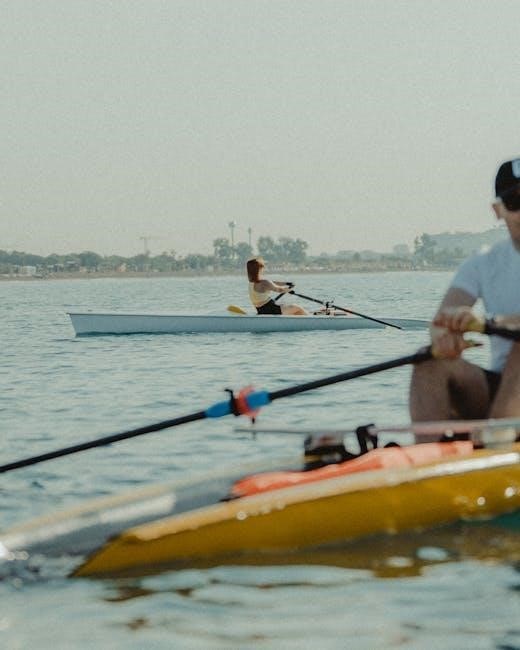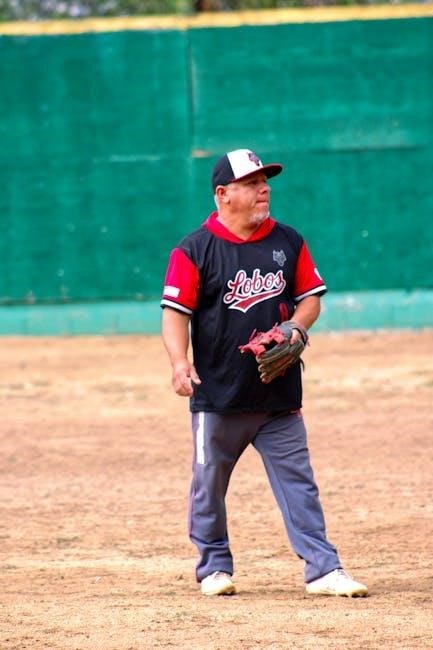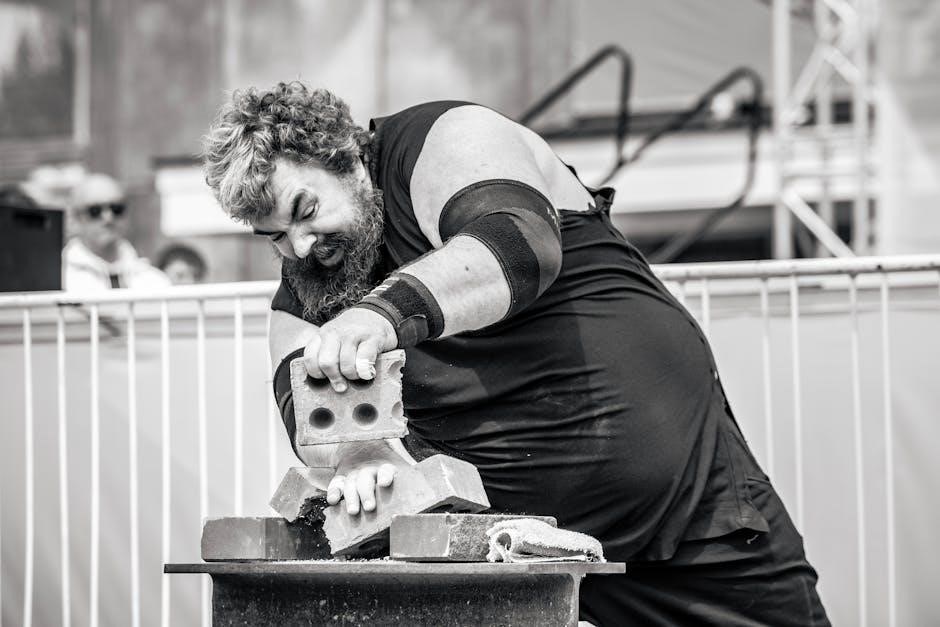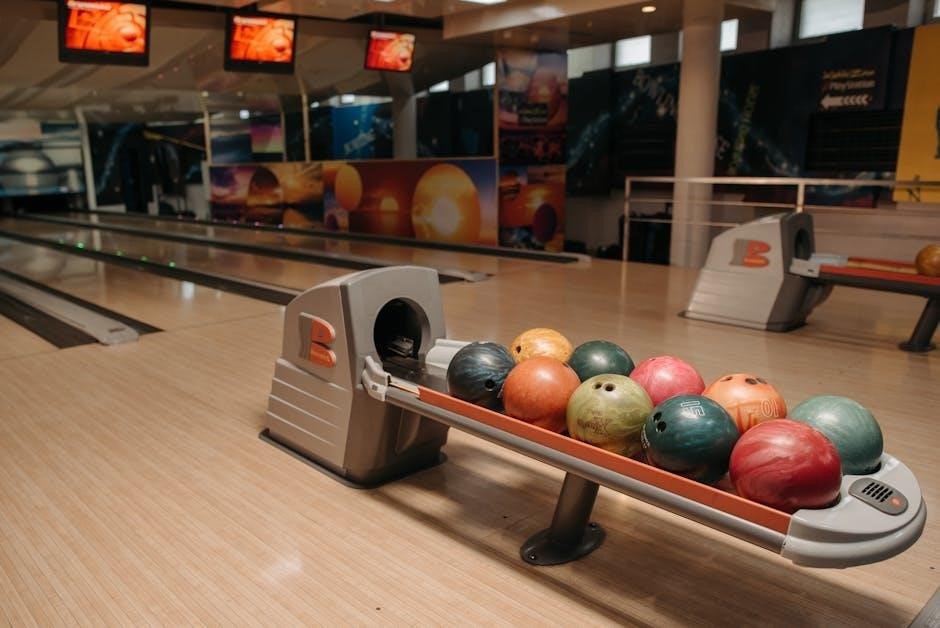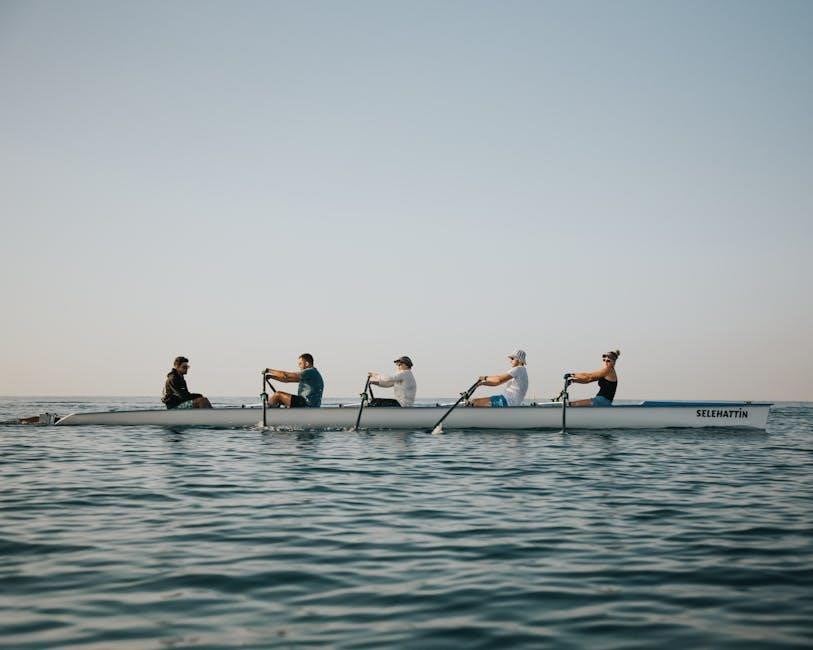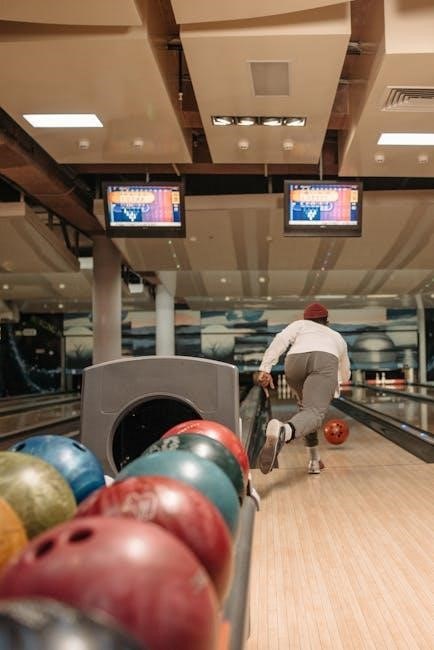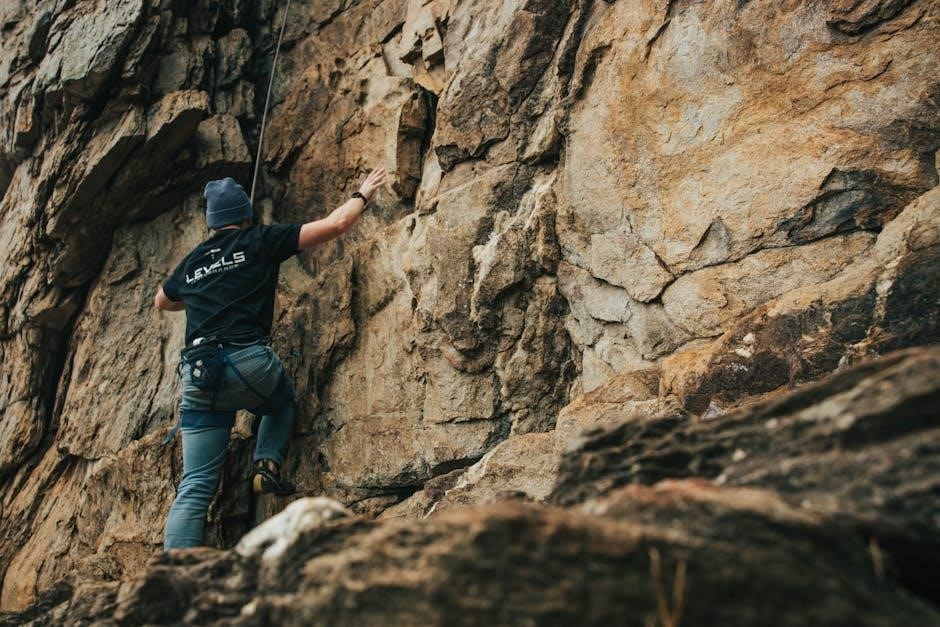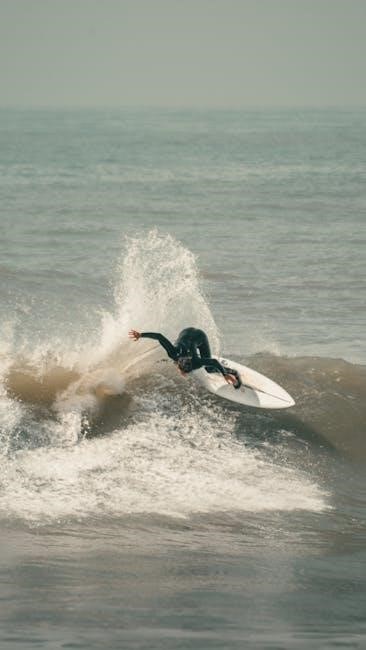Celebrate St. Patrick’s Day with engaging word search PDFs, designed for all ages. These festive puzzles enhance vocabulary, problem-solving skills, and offer varying difficulty levels for diverse learning needs.
Overview of St. Patrick’s Day Celebrations
St. Patrick’s Day is a vibrant celebration honoring Ireland’s patron saint, blending cultural and religious traditions. Parades, feasting, and wearing green are iconic customs. The holiday fosters community spirit, with families and friends gathering to embrace Irish heritage. Word search PDFs add an educational twist, making celebrations engaging while teaching vocabulary and cultural symbols.
- Celebrations include parades, music, and traditional Irish food.
- Symbolic elements like shamrocks, leprechauns, and rainbows are central.
- Word searches integrate learning with festive fun, promoting cultural awareness.
Importance of Word Search Activities in Celebrations
Word search activities add an engaging and educational dimension to celebrations like St. Patrick’s Day. They enhance cognitive skills, promote problem-solving, and foster a sense of accomplishment. These puzzles encourage active participation, making them ideal for both children and adults. By incorporating festive themes, word searches create a fun way to learn about cultural symbols and vocabulary, ensuring celebrations are both enjoyable and enriching.
- Enhances cognitive and problem-solving abilities.
- Fosters engagement and active participation.
- Combines learning with celebration, making it memorable.
Benefits of Using PDF Format for Word Searches
The PDF format offers numerous advantages for St. Patrick’s Day word searches, ensuring high-quality visuals and consistent formatting across devices. It allows for easy sharing, printing, and digital access. PDFs are also storage-efficient and can include security features like password protection. Their versatility makes them ideal for both home and classroom use, providing a reliable and accessible way to enjoy festive word search activities.
- Portable and compatible with all devices.
- High-quality, consistent formatting.
- Easy to print and share digitally.

History and Cultural Significance
St. Patrick’s Day has deep historical roots, celebrating Ireland’s patron saint and its rich cultural heritage. It symbolizes Irish identity and is marked by traditions reflecting faith and festivities.
Origins of St. Patrick’s Day
St. Patrick’s Day originates from the feast day of Saint Patrick, Ireland’s patron saint, celebrated on March 17th. It commemorates his life and mission to convert the Irish to Christianity. The shamrock, a symbol Patrick used to explain the Holy Trinity, is central to the day’s imagery. Initially a religious observance with feasts and church services, it evolved into a celebration of Irish culture, traditions, and heritage. Over time, parades, green attire, and festive activities became integral to the global celebration.
Cultural Symbols Associated with St. Patrick’s Day
St. Patrick’s Day is rich in cultural symbols, each carrying deep meaning and heritage. The shamrock, Ireland’s national symbol, represents the Holy Trinity. Leprechauns, mythical fairies, embody good luck and hidden treasures. Rainbows and pots of gold symbolize hope and prosperity. The color green dominates, signifying Ireland’s lush landscapes and the country’s nickname, the Emerald Isle. These symbols are often incorporated into word search PDFs, adding festive flair and cultural connection to the activity, making them both educational and entertaining for participants of all ages.
Traditions and Activities Commonly Associated with the Holiday
St. Patrick’s Day is celebrated with vibrant parades, festive music, and joyful gatherings. People wear green attire to symbolize good luck and Ireland’s lush landscapes. Traditional dishes like corned beef and cabbage are enjoyed, while Irish step dancing and live music add to the festive atmosphere. Attendees often visit churches for special services, while families engage in fun activities like crafting shamrocks or hunting for leprechaun gold. These traditions create a lively backdrop for incorporating word search PDFs, blending cultural celebration with engaging puzzles for all ages.

Design and Features of St. Patrick’s Day Word Search PDFs
St. Patrick’s Day Word Search PDFs feature festive themes, grid layouts, and user-friendly designs. They include high-quality graphics, clear instructions, and an answer key for convenience.
Types of Word Search Grids Available
St. Patrick’s Day Word Search PDFs offer various grid types to suit preferences and skill levels. Standard square grids are common, while themed grids feature shapes like shamrocks or leprechaun hats. Some PDFs include smaller grids for younger children or larger, more complex grids for adults. Grids may vary in word orientation, with words placed horizontally, vertically, or diagonally. Themed grids often align with festive symbols, enhancing the holiday spirit and making the activity more engaging for participants of all ages.
Incorporation of Festive Themes and Symbols
St. Patrick’s Day Word Search PDFs often incorporate festive themes and symbols to enhance the celebratory atmosphere. Shamrocks, leprechauns, rainbows, and pots of gold are commonly featured, making the activity visually engaging. The grids may include themed borders and illustrations, while words like “SHAMROCK” or “LEPRECHAUN” are hidden within the puzzles. This integration of cultural elements makes the word search a fun and educational way to connect with the holiday’s traditions and spirit, appealing to both children and adults alike.
Different Difficulty Levels for Various Age Groups
St. Patrick’s Day Word Search PDFs are designed to cater to diverse age groups by offering varying difficulty levels. Younger children can enjoy simple puzzles with larger text and fewer words, while older kids and adults can tackle more complex grids with smaller fonts and hidden words. This inclusivity ensures that everyone, from preschoolers to seniors, can participate and have fun. The adjustable challenge makes the activity suitable for both casual enjoyment and educational purposes, promoting engagement across generations.
Educational Benefits of Word Search Puzzles
Word search puzzles enhance vocabulary, improve memory, and boost problem-solving skills. They foster focus, patience, and logical thinking, making learning interactive and enjoyable for all ages.
Improving Vocabulary and Word Recognition
Word searches are an engaging way to enhance vocabulary and word recognition skills. By incorporating St. Patrick’s Day-themed words, individuals are exposed to relevant terminology, fostering familiarity and understanding. The repetitive exposure to words in different orientations improves visual recognition and spelling accuracy. This activity also encourages learners to think critically about word meanings, making it an effective tool for language development. The festive context adds fun, reinforcing retention and a positive association with learning new words.
Enhancing Problem-Solving and Cognitive Skills
Engaging in St. Patrick’s Day word search PDFs enhances problem-solving and cognitive skills. The activity requires strategic thinking to locate hidden words, improving critical thinking and spatial reasoning. Players must analyze word orientations and patterns, sharpening their ability to process information efficiently. This mental exercise boosts memory retention and concentration, particularly when solving puzzles with increasing difficulty. The festive theme adds an engaging element, making cognitive development feel like a fun challenge rather than a tedious task, fostering a love for problem-solving activities.
Encouraging Learning Through Play
St. Patrick’s Day word search PDFs offer an engaging way to encourage learning through play. By incorporating festive themes and vocabulary, these puzzles create a fun, interactive environment where students can build their language skills. The playful nature of word searches makes learning feel like a game, increasing student motivation and participation. This approach not only enhances vocabulary but also introduces cultural elements, fostering curiosity and appreciation for Irish traditions in a lighthearted and enjoyable manner for all ages.

Popular Words and Themes in St. Patrick’s Day Word Searches
St. Patrick’s Day word searches feature themes like shamrocks, leprechauns, rainbows, and gold, capturing the festive spirit while introducing Irish culture and traditions in a fun, engaging way.
Common St. Patrick’s Day Vocabulary
St. Patrick’s Day word searches often include vocabulary like shamrock, leprechaun, rainbow, and gold, which are central to the holiday’s themes. Words such as Ireland, Luck, and Clover also appear frequently, reflecting the celebration’s heritage. These terms help participants connect with the festive atmosphere and learn key phrases associated with Irish culture. The inclusion of such vocabulary makes the activity both educational and enjoyable, catering to both children and adults celebrating the holiday.
Irish Culture and Traditions as Word Themes
Irish culture and traditions are beautifully represented in St. Patrick’s Day word searches through themes like Celtic symbols, traditional music, and festive foods. Words such as Celtic cross, harp, and Colcannon highlight Ireland’s rich heritage. These themes not only celebrate the holiday but also provide insight into Irish identity. By incorporating cultural elements, word searches become a fun way to learn about and connect with Ireland’s customs, making them both entertaining and educational for participants of all ages.
Incorporating Mythical and Legendary Elements
St. Patrick’s Day word searches often feature mythical elements like leprechauns, rainbows, and pots of gold, adding a touch of magic to the activity. These themes, rooted in Irish folklore, captivate participants and bring cultural depth. Words like Blarney Stone and fairies also appear, highlighting Ireland’s rich mythical heritage. By integrating these legendary elements, word searches become engaging and educational, offering a fun way to explore Irish mythology while celebrating the holiday.

Accessibility and Customization Options
St. Patrick’s Day word search PDFs offer adjustable font sizes and high-contrast themes for accessibility. Users can also customize grids and themes to suit individual preferences and needs.
Free Printable PDFs for Home and Classroom Use
Free St. Patrick’s Day word search PDFs are widely available online, offering a convenient and cost-effective way to engage in festive activities. These printable resources are ideal for both home and classroom settings, providing entertainment and educational value. Many websites offer customizable templates that cater to different age groups and skill levels, ensuring accessibility for all learners. Teachers and parents can easily download and print these PDFs, making them a popular choice for celebrating the holiday while promoting learning and fun.
Customizable Word Search Templates
Customizable word search templates allow users to tailor puzzles to specific themes, vocabulary, and difficulty levels. Teachers and parents can easily add relevant words related to St. Patrick’s Day, such as “SHAMROCK” or “LEPRECHAUN,” ensuring the activity aligns with learning objectives. Many templates offer adjustable grid sizes, fonts, and layouts, making them adaptable for different age groups. This flexibility enables personalized learning experiences, catering to individual needs and preferences while maintaining the festive spirit of the holiday.
Accessibility Features for Children with Disabilities
St. Patrick’s Day word search PDFs often include accessibility features to ensure inclusivity for children with disabilities. Large-text options accommodate visual impairments, while high-contrast color schemes enhance readability. Some PDFs are designed with dyslexia-friendly fonts, and others are compatible with screen readers for the visually impaired. Additionally, keyboard-navigable grids allow children with motor disabilities to participate fully. These features ensure that everyone can enjoy the festive activity, promoting equal engagement and fun for all participants.
How to Create Your Own St. Patrick’s Day Word Search PDF
Creating a St. Patrick’s Day word search PDF involves selecting festive themes, choosing relevant words, and organizing them in a grid. Add shamrocks or leprechauns for charm, finalize the layout, and convert to PDF for sharing or printing.
Step-by-Step Guide to Designing a Word Search
Start by listing St. Patrick’s Day-related words, such as “shamrock” or “leprechaun.” Next, create a grid using a spreadsheet or specialized software. Place the words horizontally, vertically, or diagonally, ensuring they fit naturally. Fill empty spaces with random letters to complete the grid. Add festive symbols like shamrocks or rainbows for a themed look. Finally, review and test the puzzle to ensure all words are hidden correctly and the design is visually appealing.
Tools and Software for Creating Word Search Puzzles
Popular tools for designing word search puzzles include Microsoft Excel, Google Sheets, and specialized software like WordSearch Pro or Armored Penguin. Online generators such as PuzzleMaker and Crossword Hobbyist simplify the process. For design enthusiasts, graphic tools like Canva or Adobe Illustrator can enhance visuals. Additionally, free online platforms offer customizable templates, making it easy to create St. Patrick’s Day-themed puzzles. These tools cater to both beginners and advanced users, ensuring professional-looking results.
Tips for Making Engaging and Challenging Puzzles
To create engaging word searches, mix word directions and lengths, ensuring a balance between easy and challenging terms. Incorporate festive St. Patrick’s Day themes with symbols like shamrocks or leprechauns. Add hidden messages or visual elements for fun. Vary grid sizes and shapes to keep puzzles interesting. For advanced users, use less common vocabulary or mythology references. Timing activities and encouraging teamwork can enhance enjoyment. These strategies ensure puzzles are both entertaining and intellectually stimulating for all participants.

Where to Find Free St. Patrick’s Day Word Search PDFs
- Discover free St. Patrick’s Day word search PDFs on platforms like Teachers Pay Teachers, Etsy, and Pinterest.
- Explore educational websites offering holiday-themed worksheets.
- Download printable activities from dedicated party planning sites.
Popular Websites Offering Free Downloads
Find free St. Patrick’s Day word search PDFs on websites like Teachers Pay Teachers, Etsy, and Pinterest. These platforms offer a variety of festive puzzles designed for all ages. Teachers Pay Teachers provides educational resources, while Etsy features creative and customizable designs. Pinterest is ideal for discovering unique and visually appealing word searches. Use keywords like “free St. Patrick’s Day word search printable” to find the best options quickly and effortlessly.
Educational Resources and Worksheets
Educational platforms like Education.com and Super Teacher Worksheets offer free St. Patrick’s Day word search PDFs tailored for schools. These resources often include lesson plans, vocabulary lists, and activity sheets. They cater to different grade levels, ensuring age-appropriate challenges. Many worksheets integrate math or reading skills, making them versatile for classroom use. Teachers can easily download and print these materials, combining fun with learning to engage students during the festive season.
Community-Shared and User-Generated Content
Online communities and forums often share St. Patrick’s Day word search PDFs created by teachers, parents, and enthusiasts. These user-generated resources are frequently posted on social media platforms like Pinterest and Facebook. They offer a wide variety of themes, difficulty levels, and designs, making them accessible to diverse learners. Many creators provide customizable templates, allowing users to adapt puzzles to specific needs. This collaborative sharing fosters creativity and enhances the festive learning experience for students of all ages.

Using St. Patrick’s Day Word Search PDFs in the Classroom
Teachers can integrate festive word searches into lessons for interactive learning, enhancing vocabulary and engagement while celebrating the holiday. They can be printed or used digitally.
Integrating Word Searches into Lesson Plans
Integrating St. Patrick’s Day word search PDFs into lesson plans can enhance vocabulary and cultural awareness. Teachers can align the activity with curriculum goals, such as spelling exercises or history lessons. The PDFs can be used as warm-ups or as independent work. For younger students, focus on basic word recognition, while older students can explore more complex terms. Digital versions allow for interactive learning, and printed copies can include fun, hands-on activities. This versatile tool supports diverse learning styles and keeps students engaged.
Activities for Different Grade Levels
St. Patrick’s Day word search PDFs can cater to various grade levels with tailored activities. For elementary students, focus on simple word searches to build vocabulary. Middle schoolers can engage in themed puzzles linking words to Irish history or mythology. High school students can tackle advanced grids with literary references. Teachers can adapt difficulty levels, ensuring each grade enjoys a fun, relevant challenge. Interactive digital versions add a modern twist for tech-savvy learners, making the activity inclusive and engaging for all ages.
Encouraging Teamwork and Competition
St. Patrick’s Day word search PDFs can foster teamwork and healthy competition in classrooms or family gatherings. Students can work in groups to complete puzzles, promoting collaboration and problem-solving. Teachers can organize timed competitions, rewarding the fastest solvers with small prizes. This approach not only enhances engagement but also builds camaraderie among participants. The festive theme adds excitement, making learning a fun and shared experience for everyone involved.

Tips for Effective Use of Word Search PDFs
Use St. Patrick’s Day word search PDFs by setting clear goals, encouraging completion, and discussing meanings of found words. Ensure access to writing tools and foster engagement through rewards.
Maximizing Learning Outcomes
To maximize learning outcomes with St. Patrick’s Day word search PDFs, align activities with lesson plans and educational goals. Use the puzzles to reinforce vocabulary, word recognition, and problem-solving skills. Encourage students to discuss unfamiliar words, linking them to St. Patrick’s Day themes. Highlight cultural references to deepen understanding. Provide immediate feedback and celebrate progress to build confidence. Incorporate interactive elements, such as timers or team challenges, to enhance engagement and foster a competitive yet supportive learning environment.
Encouraging Independent and Group Work
St. Patrick’s Day word search PDFs can be tailored to support both independent and group work. For independent learning, students can complete puzzles at their own pace, fostering self-directed problem-solving. For group work, pair students or form small teams to collaborate on finding words, promoting teamwork and communication. This dual approach caters to diverse learning styles, ensuring engagement and understanding while aligning with educational goals and fostering a dynamic classroom environment.
Tracking Progress and Improvement
Tracking progress in St. Patrick’s Day word searches involves monitoring completion rates and accuracy. Educators can record time taken to finish puzzles and note improvements over time. Providing feedback on correct and incorrect answers helps students learn. This data helps identify areas needing more practice, ensuring targeted support. Regular assessments allow for adjustments in difficulty levels, keeping the activities challenging yet achievable. By tracking progress, educators can better support students’ learning and celebrate their growth, enhancing the educational value of word searches.

Common Challenges and Solutions
Solving issues like unclear instructions or difficult word placement can enhance user experience. Providing clear guidelines and adjustable formats ensures accessibility and engagement for all participants.
Troubleshooting Common Issues with Word Search PDFs
Common issues with word search PDFs include unclear text, missing words, or poor formatting. Ensure the PDF is high-resolution and compatible with your device. If words are hard to find, check for hidden directions or reverse spellings. For technical problems, verify your PDF reader is up-to-date. If issues persist, consult the user guide or contact the creator for assistance.
Always preview the PDF before printing to avoid wasting materials. Adjusting zoom levels can improve visibility, making the activity more enjoyable for participants of all ages.
Addressing Different Learning Styles and Needs
St. Patrick’s Day word search PDFs can cater to diverse learning styles by incorporating visual, interactive, and tactile elements. For visual learners, vibrant designs and clear fonts enhance engagement. Auditory learners benefit from companion audio guides, while kinesthetic learners can interact with digital versions. Additionally, customizable templates allow educators to adapt puzzles for special needs, such as dyslexia-friendly fonts or larger text sizes. This inclusivity ensures all students can participate and enjoy the activity, fostering an equitable learning environment.
Keeping Students Engaged and Motivated
St. Patrick’s Day word search PDFs can captivate students by incorporating festive themes and interactive elements. Hidden words related to Irish culture, such as “LEPRECHAUN” or “RAINBOW,” spark curiosity. Adding a competitive edge, like timed challenges or rewards for completion, boosts motivation. Teachers can also use group work or leaderboards to foster teamwork and friendly competition, ensuring students remain enthusiastic and invested in the activity throughout the celebration.

and Final Thoughts
St. Patrick’s Day word search PDFs offer a fun, educational way to celebrate, promoting cultural awareness and learning. Their versatility ensures continued enjoyment beyond the holiday.
The Value of Word Search Activities in Celebrations
Word search activities add educational and entertainment value to St. Patrick’s Day celebrations, fostering engagement and cultural connection. They enhance vocabulary, memory, and problem-solving skills while promoting festive spirit. These puzzles cater to diverse age groups, making them inclusive and adaptable for both individual and group participation. Their interactive nature encourages teamwork, camaraderie, and joyful learning, enriching the overall celebration experience.
Future Trends in Word Search PDF Design
Future trends in St. Patrick’s Day word search PDFs include interactive features, dynamic grids, and customizable templates. Enhanced visuals and festive themes will dominate, with eco-friendly designs gaining popularity. AI-generated puzzles may emerge, offering tailored difficulty levels. AR/VR integration could revolutionize the experience, making word searches immersive. Accessibility improvements, like voice-over compatibility, will cater to diverse users. These innovations aim to blend tradition with modern technology, ensuring engaging and inclusive celebrations for all ages.
Encouraging Continued Use Beyond St. Patrick’s Day
Encouraging continued use of St. Patrick’s Day word search PDFs beyond the holiday involves highlighting their versatility. These puzzles can be adapted for other celebrations or educational purposes, fostering year-round learning. By emphasizing their cognitive benefits and fun nature, they can become a regular activity for students and families. Schools can incorporate them into curricula, while households can enjoy them as a bonding tool. This approach ensures lasting engagement and educational value beyond the festive season.



